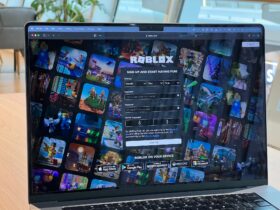The AI ecosystem demonstrates moves and counter-moves that mirror social, scientific, and technological interplay. In an arena witnessing a rapid evolution, news bites from the last week, sprinkled with nascent research insights, offer food for thought for the intrigued and the invested alike.
Leading the pack is the grand reveal of a mammoth text dataset by the Allen Institute for AI. Adopting the moniker, Dolma, this dataset is intriguingly named after “Data to feed OLMo’s Appetite.” OlMo, or the planned open language model, aligns with the large language model range found in OpenAI’s ChatGPT. Dolma, therefore, offers a substantial stepping-stone towards shaping OLMo.
Meanwhile, Google Photos introduces a new view termed “Memories,” with AI at its center. This feature provides users with a veritable timeline, akin to a scrapbook, recording everything from jubilant celebrations to daily life’s fleeting moments. Memories offer the opportunity to preserve and share moments that truly matter.
Concurrently, the AI world introduces us to the toddler-equivalent “RoboAgent,” a brainchild of the efforts of CMU and Meta. Its aim is reminiscent of a child’s learning journey, attempting to understand and interact with objects through observation and touch.
Amplifying the beat in the AI space is Anthropic, an AI startup co-founded by former OpenAI leaders, attracting major funding support. Korean mobile carrier behemoth SK Telecom offers a fresh infusion of $100 million just three months after a successful Series C funding round led by Spark Capital that raised $450 million.
Juxtaposing these tech-focused threads are fresh developments from Google. Echoing a drive for knowledge, this search engine giant introduces a Search Generative Experience (SGE) that offers language tranversing tools, definition sharing, and an informative AI feature for an enriched browsing experience.
Vividly coloring the AI canvas is Snapchat’s in-app AI chatbot feature, My AI, briefly stirring a chatter about appearing to have a mind of its own. Snap, Snapchat’s parent company, later confirmed that a bug was the culprit behind the mysterious events.
Unfolding in parallel is Amazon’s plan to leverage generative AI, thus “enhancing” product reviews. The retail juggernaut intends to present concisely summarized reviews to shoppers – a move that walks the thin line between utility and undermining reviewer effort.
As if to shake up quiet corners, Opera sends ripples of excitement among iOS users by introducing Aria, its browser AI product, as a free tool directly integrated into its web browser.
The puzzle does not stop here. OpenAI steps onto the field, claiming a development that employs its flagship generative AI model, GPT-4, for content moderation, thereby easing burdens on human teams. Ascending to the stage next is Global Illumination, a New York–based startup leveraging AI. In a first, Global Illumination becomes OpenAI’s maiden public acquisition.
The AI palette blends real world applications by EPFL students illustrating AI usage to help the visually impaired. From amazingly useful apps directing users towards empty seats to reading relevant medicine bottle information, AI stamps usefulness in capital letters.
The grand AI theatre brings larger-than-life innovations, experiments, and research. Mirroring the AI scenery, the final act unfurls in the form of the recent semantics typography and image-modeling papers that project language and AI in a new light. Future symphonies played by AI are waiting to be written on the innovation score, and while we may have a while to go until AI fully understands our day-to-day, a conclusive image of how far we’ve come is fast coming into focus.












